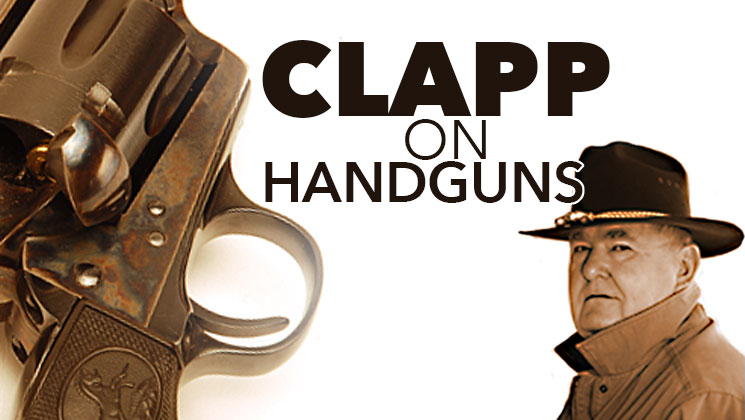
What exactly is holster wear? Commonly, it means a burnishing of the steel surface that comes from taking the gun in and out of the holster, and it is a term most associated with blued-steel guns.
Contact between the blued surface of the gun and the leather of the holster tends to somewhat strop the prominent edges and corners of the gun. I have several older guns that have radically rounded edges and corners that are the hallmark of long and hard use, as well as being carried in a holster. With blued guns, the oxidation of bluing can also be physically worn off. The passivation process of finishing stainless-steel arms is much more durable.
Sometimes, visible wear on the edges and corners of a handgun comes from contact with a mildly abrasive surface other than a leather holster. Kydex holsters will polish the highlights off your new Glock in short order. And other times, fabric works its remarkable magic. I remember when a jail sergeant had the trusties cut square patches of old carpet to line the bottom of the individual gun lockers at the booking area of the jail. If you did a lot of booking, your handgun went in and out of the little steel boxes many times every day. The finish took a beating.
Also, when a revolver has true holster wear on the barrel and cylinder, it almost always has similar wear on the exposed bottom of the trigger guard. In this regard, I recall a small batch of police trade-in Colt Officers Model revolvers I once examined. They were all well-cared for, but had extreme pitting and abrasion on the bottom of the trigger guard. It turned out they were used by motorcycle officers and their underneath sides were exposed to road salt.
After a lengthy discussion with an experienced collector and gun buyer, we concluded that sometimes bluing wear on a handgun, often dismissed as “holster” wear, is actually wear associated with storage in a drawer or bin where the gun drags across fabric of some kind.





































